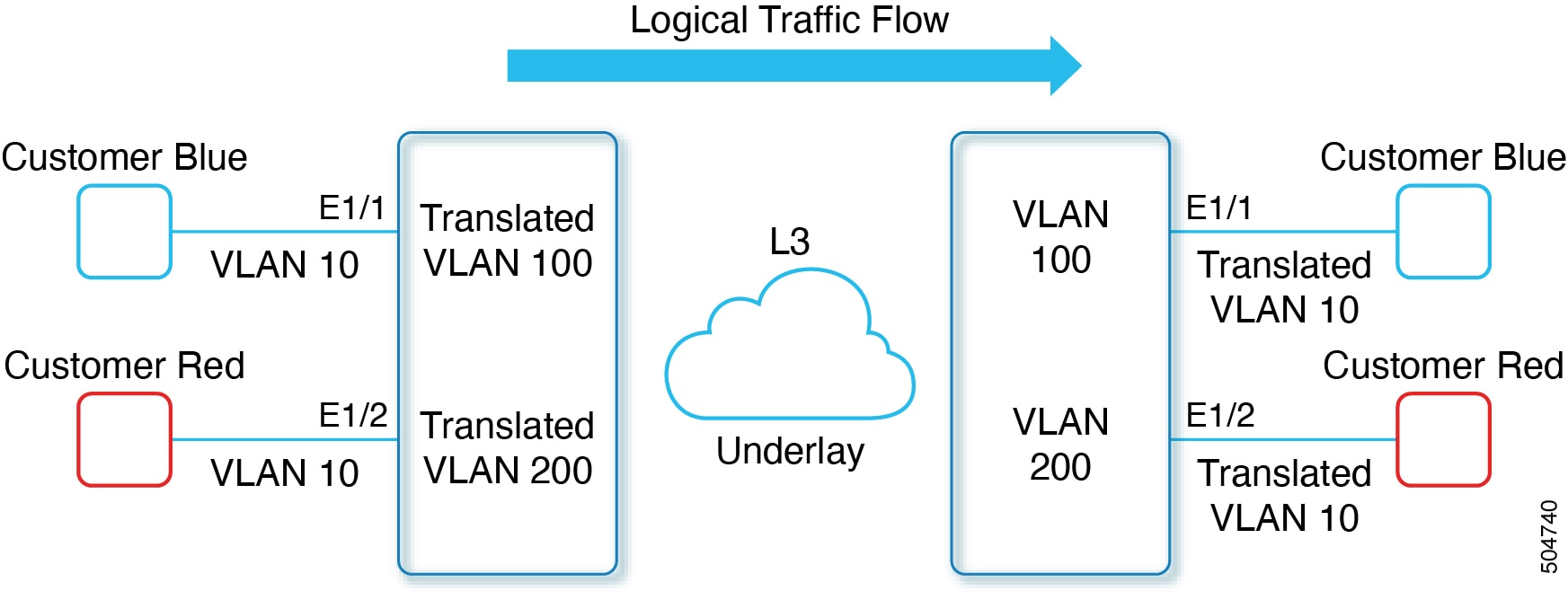Port VLAN Mappings
When a service provider has multiple customers connecting to the same physical switch using the same VLAN encapsulation, but they should not be on the same Layer 2 segment, translating the incoming VLAN to a unique VLAN/VNI is the right way to extend the segment.
-
Allows multiple customers to use the same VLAN encapsulation on the same switch without sharing a Layer 2 segment.
-
Translates incoming VLANs to unique VLANs or VNIs for each customer.
-
Supported on Cisco Nexus 9300-EX/FX/FX2/FX3/GX/GX2, C9408 platform switches, and Cisco Nexus 9500 switches with 9700-EX/FX/GX line cards (beginning with Cisco NX-OS Release 10.3(3)F).
Port VLAN mapping enables translation between ingress (incoming) VLANs and local (translated) VLANs on a port.
-
Traffic arriving on an interface with VLAN translation enabled is mapped from the incoming VLAN to a translated VLAN.
-
On the underlay, the inner dot1q is deleted and switched over to the non-VXLAN network.
-
On the outgoing interface, traffic is converted back to the original VLAN and egressed out.
-
VLAN counters should be checked on the translated VLAN, not on the ingress VLAN.
Example scenario:
-
Two customers, Blue and Red, connect to the leaf using VLAN 10 as their encapsulation.
-
VLAN 10 for Customer Blue (on interface E1/1) is mapped to VLAN 100.
-
VLAN 10 for Customer Red (on interface E1/2) is mapped to VLAN 200.
-
On the other leaf, the mapping is reversed: incoming VLAN 100 is mapped to VLAN 10 on Interface E1/1, and VLAN 200 is mapped to VLAN 10 on Interface E1/2.


 Feedback
Feedback